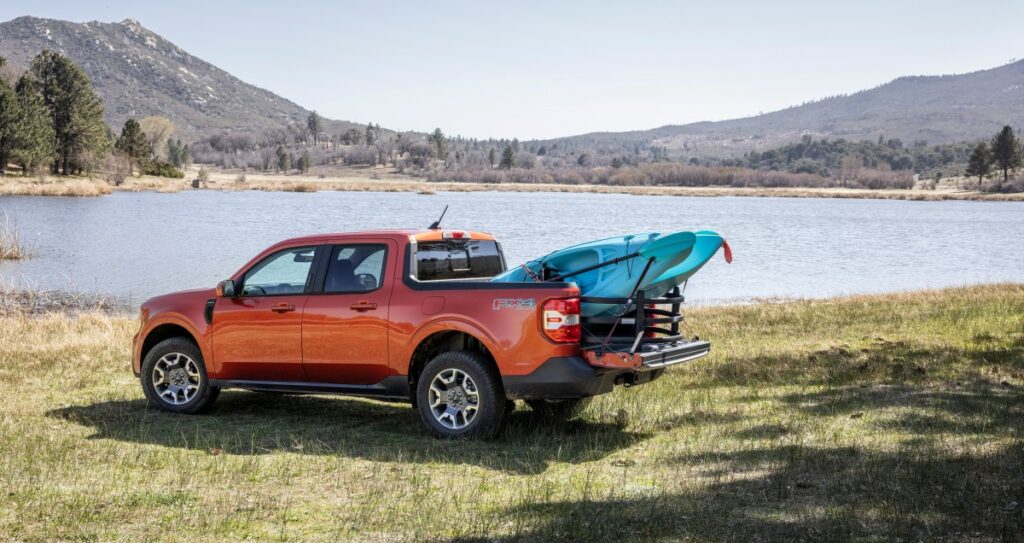The first vehicle that will be built on the low-cost EV platform Ford’s been developing in secret will be a mid-size pickup due out in 2027, the automaker announced Wednesday morning.
The news comes as part of a much larger rewriting of Ford’s electrification plans. The company is abandoning a plan to make an all-electric three-row SUV, opting instead to power those forthcoming vehicles with hybrid powertrains. A next-generation full-size electric pickup — the followup to the F-150 Lightning codenamed “T3” — is now expected to launch in 2027, not 2025. These changes may cost Ford as much as $1.9 billion, the company said Wednesday.
The changes to Ford’s plans also come at a time when many major automakers are curbing their all-electric ambitions. General Motors and Honda abandoned a plan to co-develop affordable EVs last year. GM itself has announced a similar prioritization of hybrids in the near-term, and VW of America recently said that a “balanced approach is the best way.”
Ford is not the only company attempting to drive down the entry-level cost of its EVs. But the decision to build a pickup truck on the low-cost EV platform sets Ford up to differentiate itself from market-leader Tesla, which is focusing more on developing Elon Musk’s long-promised “robotaxi” as well as stripped-down versions of its Model Y SUV and Model 3 sedan.
CEO Jim Farley first revealed the existence of the “skunkworks” team building the low-cost platform in February. It was created in 2022 and is currently headed up by by former Tesla exec Alan Clarke, with a main office in Irvine, California. The project got a boost of talent in late 2023 when Ford acquired EV charging startup Auto Motive Power. But the automaker has since filled out the team of around 300 with dozens of workers from Rivian, Tesla, and even around 10 from the recently-disbanded electric/autonomous vehicle team inside Apple, as TechCrunch first reported in June.
Ford says the low-cost pickup truck will “cater to customers who want more for their money – more range, more
utility, more useability.” The company still plans to use the platform it’s developing to power “multiple vehicle styles — for both retail commercial customers,” Ford said Wednesday. The company added that the “personalized digital experiences” it will build into these vehicles will help improve Ford’s “mix of sticky, profitable revenue over time.”
Farley told TechCrunch in June that Ford was still deciding whether to take the technology and supply chain work the skunkworks team had developed and apply it across all the company’s models, or focus on a few vehicles tied to this specific platform. “I can’t tell you the outcome of that yet, because we’re in the midst of it. I will tell you that they’ve done a great job, and the approach is distinctly different than our first generation of products,” he said.
As for the other vehicle Ford changed its plans for, the company says delaying the large pickup truck to 2027 will make it possible to “utilize lower-cost battery technology” and take advantage of other unspecified “cost breakthroughs.” Ford says shifting the three-row SUVs to hybrid powertrains will allow the company to offer “breakthrough efficiency, performance benefits and emissions reductions versus pure gas vehicles and extend the range of the vehicle on road trips relative to pure electric vehicles.”
Ford has some reason to think hybrid sales might fare better over the next few years. Farley told TechCrunch in June that Ford’s F-150 sales this year have been about 25% hybrid powertrain. “We did not expect that,” he said. Sales of the company’s compact pickup truck, the Maverick, have been closer to 70% hybrid in 2024.


